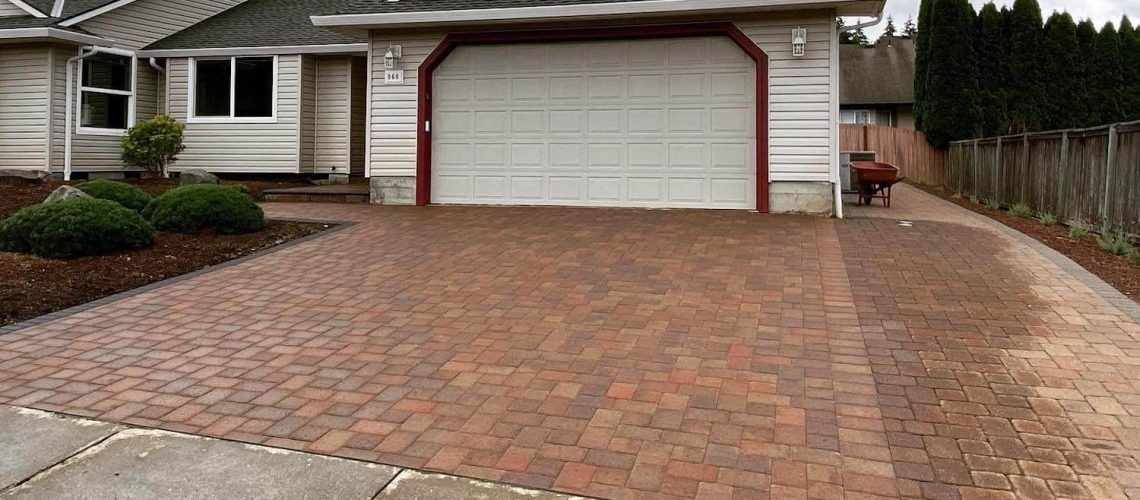Brick pavers are a popular choice for landscaping projects, from patios and walkways to driveways and retaining walls. They offer a classic, timeless look that can complement any home or outdoor space. However, beyond their aesthetic appeal, brick pavers offer several environmental advantages that make them a sustainable choice for your landscaping needs. In this blog post, we will explore these benefits and how they can contribute to a healthier planet.
Permeability
One of the primary environmental advantages of brick pavers is their permeability. Unlike concrete or asphalt surfaces, which are impermeable and prevent water from seeping into the ground, brick pavers allow water to penetrate the surface and replenish the soil below. This helps to recharge groundwater, prevent erosion, and reduce stormwater runoff, which can carry pollutants and contaminants into nearby waterways.
In addition to their permeability, brick pavers can also be installed in a way that maximizes their water-absorbing potential. For example, by using a permeable base material such as crushed stone or gravel, and leaving gaps between the pavers, water can be directed to the soil more efficiently.
Durability
Brick pavers are renowned for their durability and long-lasting performance. They can withstand heavy foot traffic, extreme weather conditions, and the wear and tear of everyday use without showing signs of damage. This means that they require minimal maintenance over their lifetime, which reduces the need for regular replacements and repairs.
The durability of brick pavers also means that they are a cost-effective choice in the long run. While the upfront costs of installation may be higher than other landscaping options, such as concrete or wood, their longevity, and low maintenance requirements can result in significant savings over time.
Recyclability
Another key environmental advantage of brick pavers is their recyclability. Unlike concrete or asphalt surfaces, which are difficult to recycle and often end up in landfills, brick pavers can be reused and repurposed in a variety of ways. For example, if you decide to remove your brick paver patio or walkway, the pavers can be salvaged and reused in another project, reducing the need for new materials.
In addition, if you do need to dispose of your brick pavers, they can be crushed and recycled into new construction materials. This reduces the demand for new resources and helps to conserve natural habitats and ecosystems.
Energy Efficiency Brick
Brick pavers are also energy-efficient, particularly when used in outdoor spaces. They have a high thermal mass, which means that they can absorb and store heat from the sun during the day, and release it slowly at night. This can help to regulate temperature fluctuations in your outdoor space, reducing the need for artificial heating and cooling.
In addition, brick pavers can be installed in a way that promotes natural ventilation and airflow. By leaving gaps between the pavers, air can circulate more freely, creating a cooler, more comfortable environment during hot weather.
Low Maintenance
Another environmental advantage of using brick pavers in landscaping is their low maintenance requirement. Unlike other landscaping materials, such as wood or concrete, brick pavers require little upkeep. This means that you will not have to use any harmful chemicals or toxins to maintain their appearance. Simply cleaning them with water and a mild detergent will suffice.
Brick Paver Project Conclusion
In conclusion, using brick pavers in landscaping has several environmental advantages. They are made from natural materials, require less energy to produce, and can be recycled. They also require minimal maintenance and have a long lifespan, which reduces waste and promotes sustainability. If you are looking for an eco-friendly landscaping option, brick pavers are a great choice. Contact our hardscaping company in Oregon to learn more about how we can help you create an environmentally friendly and beautiful outdoor space.

